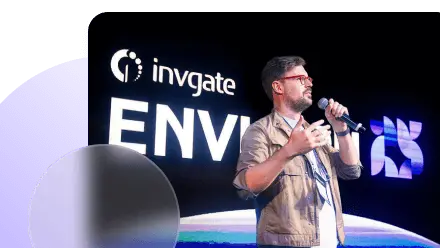Computer Lifecycle Management oversees one of the most important IT assets in any organization: computers. And far from declining, investment in these assets continues to grow.
According to Canalys, global PC shipments grew 7.4% in Q2 2025, mainly driven by the upcoming Windows 10 end-of-life. This level of investment reinforces the importance of having a solid Computer Lifecycle Management strategy.
In this blog post, we’ll explore what Computer Lifecycle Management includes, how to build a successful process, and how to get the most out of your devices.
What is Computer Lifecycle Management?
Computer Lifecycle Management is the practice of overseeing every stage in a computer’s life, from procurement and setup to maintenance and final disposal. It ensures that devices are secure, up to date, cost-effective, and aligned with your organization’s needs at every step.
For example, instead of replacing laptops every three years across the board, a solid lifecycle plan might extend their use for some teams while upgrading others based on performance needs, saving money without sacrificing productivity.
Why do you need IT Equipment Lifecycle Management?
Computer Lifecycle Management is essential, but it only covers part of the picture. To make sure every IT asset is properly managed, organizations need a strong IT Equipment Lifecycle Management (IELM) strategy.
IELM goes beyond desktops and laptops to include servers, networking gear, mobile devices, and other critical assets that keep operations running.
Since many of these assets interact with or depend on computers, managing them in isolation can create blind spots. By looking at the entire equipment ecosystem, companies gain better visibility, reduce risks, and ensure that every device, not just computers, is aligned with business goals.
5 benefits of Computer Lifecycle Management
- Cost control: Extends the useful life of computers and prevents unexpected replacement costs.
- Productivity: Ensures employees always have reliable and secure devices to do their jobs.
- Security: Reduces vulnerabilities by keeping systems updated and aligned with compliance requirements.
- Sustainability: Encourages reuse, recycling, and responsible disposal of devices at end-of-life.
- Predictability: Helps plan PC refresh cycles and budget with fewer surprises.
The PC Lifecycle Management stages
Computers, like any other IT asset, go through a natural journey from the moment they are purchased until the day they are retired.
To manage them effectively, it helps to think of their lifecycle in four main stages. Each stage has its own challenges and opportunities to save costs, extend device longevity, and keep your IT environment secure and productive.
#1. Planning
This stage is about defining needs, setting budgets, and aligning hardware refresh cycles with business goals. Planning includes deciding on standards, warranties, depreciation timelines, and procurement strategies to make sure investments are optimized from day one.
#2. Procurement and acquisition
Here organizations purchase and allocate devices. The focus is on buying the right equipment for each role, provisioning them correctly, and ensuring they are properly documented in your IT asset inventory.
#3. Operation and maintenance
Once deployed, computers need ongoing care to deliver value. This includes configuration, updates, patching, performance monitoring, upgrades, and user support. Proper maintenance not only improves productivity but also extends the useful life of devices.
#4. Disposal and replacement
Eventually, every computer reaches end-of-life. Securely wiping data, recycling or donating devices, and responsibly disposing of components are key steps. At the same time, setting clear replacement criteria ensures you refresh your fleet at the right moment to avoid downtime and hidden costs.
Developing an Equipment Lifecycle Management strategy
When we think about Asset Lifecycle Management, computers are often the first assets that come to mind. They are critical, visible, and used every day. But limiting the strategy to desktops and laptops leaves out a big part of the picture.
Servers, networking gear, mobile devices, and even industry-specific hardware all play essential roles in keeping operations running. These assets interact with computers constantly, so managing them together under an Equipment Lifecycle Management strategy gives organizations more control, visibility, and value.
#1. Define the scope of "equipment"
Clarify what counts as equipment in your organization. For some, it’s computers, servers, and networking devices; for others, it also includes mobile phones, specialized hardware, or even machinery. The first step is aligning everyone on what will be managed under the lifecycle program.
#2. Align with business and IT goals
The strategy should serve bigger objectives: cost control, security, compliance, productivity, and sustainability. This is where you connect IELM to business outcomes like reducing downtime, supporting hybrid work, or hitting ESG targets.
#3. Standardize policies and processes
Create policies for procurement, deployment, usage, upgrades, and disposal. This ensures consistency and prevents shadow IT or unmanaged assets from slipping in. Standardization also makes reporting and compliance audits much easier.
#4. Leverage the right tools
Manual tracking doesn’t scale. Computer inventory software or an IT Asset Management tool helps centralize inventory, automate lifecycle tasks, and give visibility across the equipment ecosystem. Integration with Service Management systems also ensures traceability and smoother workflows.
#5. Monitor, analyze, and improve
An IELM strategy isn’t static. Set KPIs (such as cost per device, average lifespan, utilization rates, and compliance metrics) and regularly review them. Use the data to adjust refresh cycles, optimize procurement, and improve sustainability efforts.
Using InvGate Asset Management as your Computer Lifecycle Management software

InvGate Asset Management is a no-code IT Asset Management tool designed to be implemented quickly and used easily thanks to its intuitive interface. It scales with your organization through a clear pricing structure and the constant addition of automation and AI-driven features.
Here are some of the capabilities that make it an excellent choice for Computer Lifecycle Management:
- Automatic IT inventory – Build a complete IT asset inventory in minutes. Computers can be added manually, discovered via network scanning, through an agent, or by connecting with multiple integrations.
- Lifecycle tracking – Monitor computers from the moment they are purchased until disposal, keeping their entire journey under control.
- Comprehensive computer tracking – Capture all the data you need: location, ownership, costs, depreciation, warranties, and contracts, all in one place.
- Health rules – Define what a “healthy” computer looks like and get alerts when conditions aren’t met. Rules are fully customizable and can include performance, storage, battery, pending reboots, unauthorized software, and more.
- Smart tags – Automatically identify and group computers based on conditions you define, making it easier to spot issues and act fast.
- Alerts and notifications – Stay updated with instant alerts and automated notifications whenever something requires your attention.
- Reports – Generate detailed, customizable reports to analyze your computers’ performance, costs, and compliance.
- Dashboards and charts – Visualize data with real-time dashboards and charts that give you a clear picture of your computer fleet at a glance.
Ready to take control of your computers’ lifecycle? Start your 30-day free trial or talk to our sales team today and see how InvGate Asset Management can transform your IT strategy.
PC Lifecycle Management best practices
A solid Computer Lifecycle Management plan is more than just buying and replacing devices. It’s about creating value, minimizing risks, and keeping your IT environment aligned with business needs. Below are some of the most important PC Lifecycle Management best practices to follow.
#1: Plan refresh cycles in advance
Define clear timelines for replacements as part of your PC Lifecycle Management process. Align refreshes with performance data, warranties, and business goals to avoid unexpected failures and budget surprises.
Match computers to roles
Not every employee needs the latest hardware. Smart allocation is a key part of laptop lifecycle management and computer hardware lifecycle management, helping reduce costs while still meeting performance requirements.
Automate monitoring and updates
Leverage PC lifecycle management tools or computer lifecycle management software to track device health, apply patches, and receive alerts. Automation reduces human error and improves both security and efficiency.
Repurpose before replacing
Upgrades like adding RAM or switching to SSDs can extend the value of existing machines. Repurposing older devices for secondary roles is a smart way to achieve cost reduction through equipment lifecycle management.
Dispose responsibly
The last stage of IT equipment lifecycle management (ELM) is just as important as the first. Securely wipe data, recycle, or donate devices to support compliance and sustainability. This also applies to network equipment lifecycle management, ensuring no asset is left unmanaged.















